Georgia Flag Meaning
A white field with a large red Saint George's cross extending to the edges and four smaller red Bolnisi crosses in each quadrant, representing Georgia's ancient Christian heritage and the five wounds of Christ.
- Continent
- Asia
- Adopted
- 2004
- Ratio
- 2:3
- Colors
- white, red
- Designer
- Vakhtang Kobeshavidze (modern restoration)
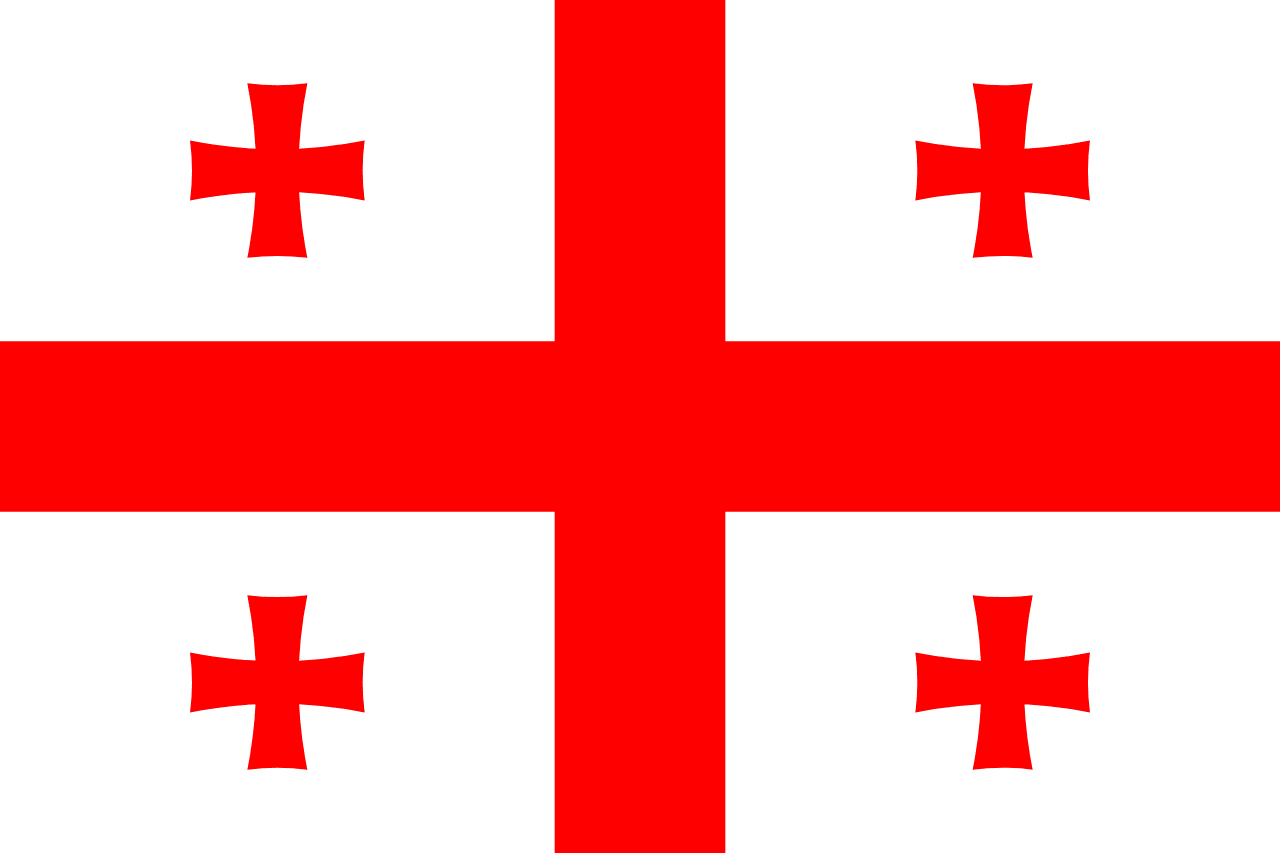
Symbolism
White Field: Represents peace, wisdom, and purity of intentions, symbolizing Georgia's desire for harmony and its commitment to Christian values that have sustained the nation through centuries of foreign domination.
Large Saint George's Cross: Represents Saint George, the patron saint of Georgia, symbolizing the protection of the nation and the Christian faith that has been central to Georgian identity since the 4th century conversion.
Four Smaller Bolnisi Crosses: Based on the ancient Bolnisi cross from the 5th century, representing the four Gospels and the spread of Christianity throughout Georgia, symbolizing the deep historical roots of Georgian Orthodox Christianity.
Five Crosses Combined: Together, the five crosses represent the five wounds of Jesus Christ, symbolizing the sacrificial love central to Christianity and Georgia's identity as one of the world's oldest Christian nations.
History
- 300 BCE - 300 CE: Ancient Georgian kingdoms of Colchis and Iberia flourished in the Caucasus region, with rich cultural traditions and early exposure to Greek, Roman, and Persian influences.
- 337 CE: Georgia became one of the first nations to adopt Christianity as the state religion under King Mirian III, establishing the Georgian Orthodox Church and Christian symbols that would define national identity.
- 5th Century: The Bolnisi cross design appeared in Georgian church architecture and manuscripts, establishing the distinctive cross style that would later be incorporated into the national flag.
- 11th-13th Century: The Georgian Golden Age under Queen Tamar saw the flourishing of Georgian culture, literature, and church architecture, with Christian symbols becoming deeply embedded in national consciousness.
- 1801-1918: Russian annexation ended Georgian independence, with the Russian Empire and later Soviet Union suppressing Georgian symbols and attempting to russify the population and Orthodox Church.
- April 9, 1991: Georgia declared independence from the Soviet Union, initially adopting a wine-red flag with national symbols before political changes led to flag modifications in subsequent years.
- 2003: The Rose Revolution brought Mikheil Saakashvili to power, initiating democratic reforms and the restoration of historical symbols as part of Georgia's European integration efforts.
- January 14, 2004: The Parliament of Georgia officially adopted the current five-cross flag, restoring the medieval design as a symbol of Georgia's Christian heritage and European aspirations.
- 2008-Present: The flag has represented Georgia through the 2008 war with Russia, continued territorial disputes over South Ossetia and Abkhazia, and ongoing efforts toward EU and NATO membership.
Trivia
- Georgia's flag is known as the 'Five Cross Flag' and is based on medieval designs dating back to the 5th century, making it one of the world's oldest flag patterns.
- The flag represents the country that gave the world its oldest wine-making tradition, with archaeological evidence of viticulture dating back 8,000 years.
- Georgia is located at the crossroads of Europe and Asia, with the flag flying over a country that has been influenced by both Western and Eastern civilizations throughout history.
- The Georgian alphabet is one of only 14 alphabets in use worldwide, with a unique script that has been used for over 1,500 years.
- Tbilisi, the capital, sits on ancient trade routes between Europe and Asia, and its name means 'warm place' due to the area's natural hot springs.
- The flag represents a country where polyphonic singing is a UNESCO-recognized intangible cultural heritage, with Georgian harmonies being among the world's most complex vocal traditions.
- Georgia is home to some of the world's deepest caves, including Krubera Cave, which reaches depths of over 2,000 meters below the surface.
- The flag flies over a country that has one of the world's highest rates of centenarians, particularly in the mountainous regions of Svaneti and other highland areas.
- Georgian cuisine features unique dishes like khachapuri (cheese bread) and khinkali (soup dumplings), representing a distinct culinary tradition influenced by both European and Asian flavors.
- The country is famous for its hospitality tradition called 'tamada,' where elaborate toasts and feasts demonstrate the Georgian commitment to friendship and honor.
- Georgia's ancient monasteries, including David Gareja and Vardzia, are carved into rock faces and represent some of the most remarkable religious architecture in the world.
- The flag represents a country that has maintained its language and Orthodox Christian identity despite centuries of domination by Persian, Ottoman, and Russian empires.
- Joseph Stalin was born in Gori, Georgia, though this fact is often downplayed in modern Georgian national narrative as the country seeks to distance itself from the Soviet legacy.
- Georgia's traditional dance, particularly the war dance 'Khorumi,' is recognized worldwide for its athletic complexity and represents Georgian martial traditions.
- The flag flies over a country with significant territorial disputes, as South Ossetia and Abkhazia declared independence with Russian support, though most of the world does not recognize their sovereignty.
Related Countries
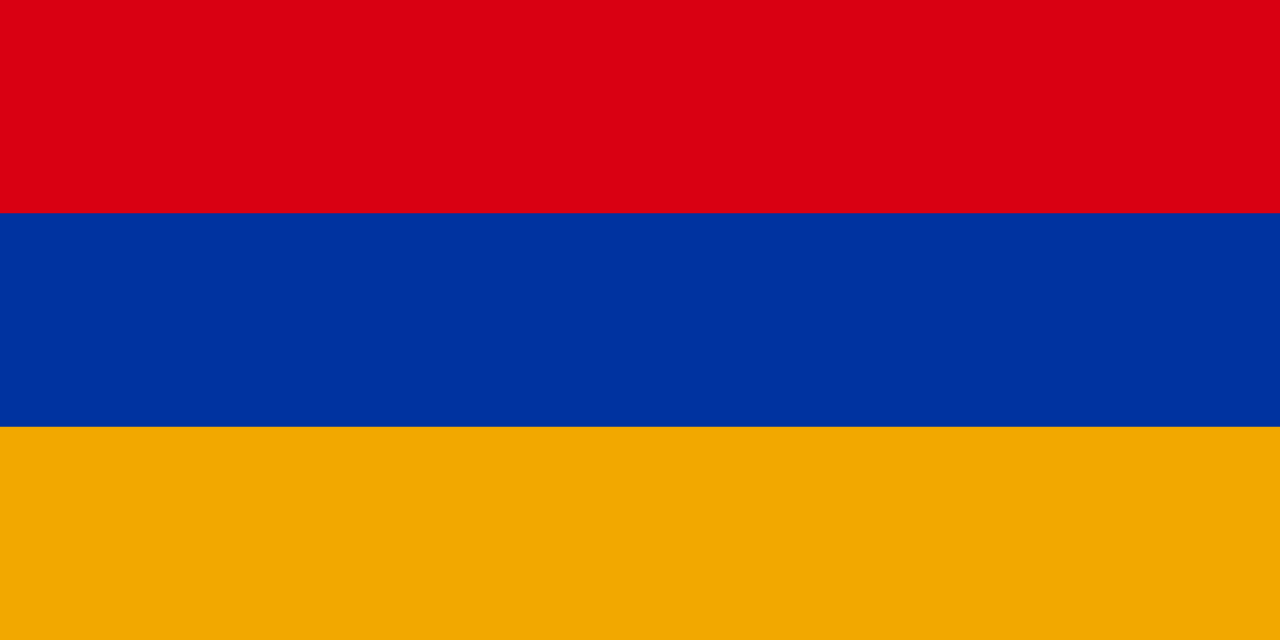
Armenia
Asia
Three horizontal stripes of red, blue, and orange (apricot), representing the blood shed for independence, the Armenian sky and hope for peace, and the fertile land and hardworking nature of the Armenian people, based on the flag of the First Republic of Armenia (1918-1920).
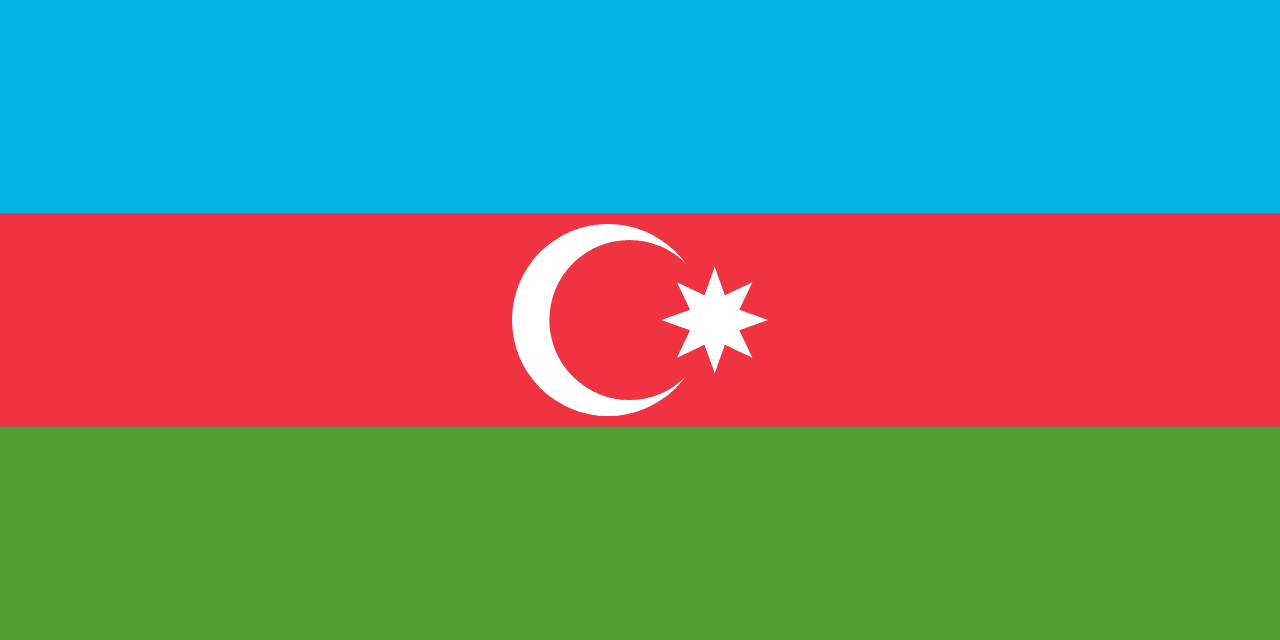
Azerbaijan
Asia
Three horizontal stripes of blue, red, and green with a white crescent and eight-pointed star in the center, representing Turkic heritage, modernity and progress, Islamic tradition, and the eight branches of the Turkic peoples, designed during the brief independence period of 1918-1920.

Turkey
Asia
The flag of Turkey is bold and simple in design with a red field with a white crescent moon and five-pointed star slightly off-center toward the hoist. This represents the blood of martyrs who died for the country, Islam, and the guidance of the state, with symbols that have ancient origins in Turkic and Ottoman traditions.
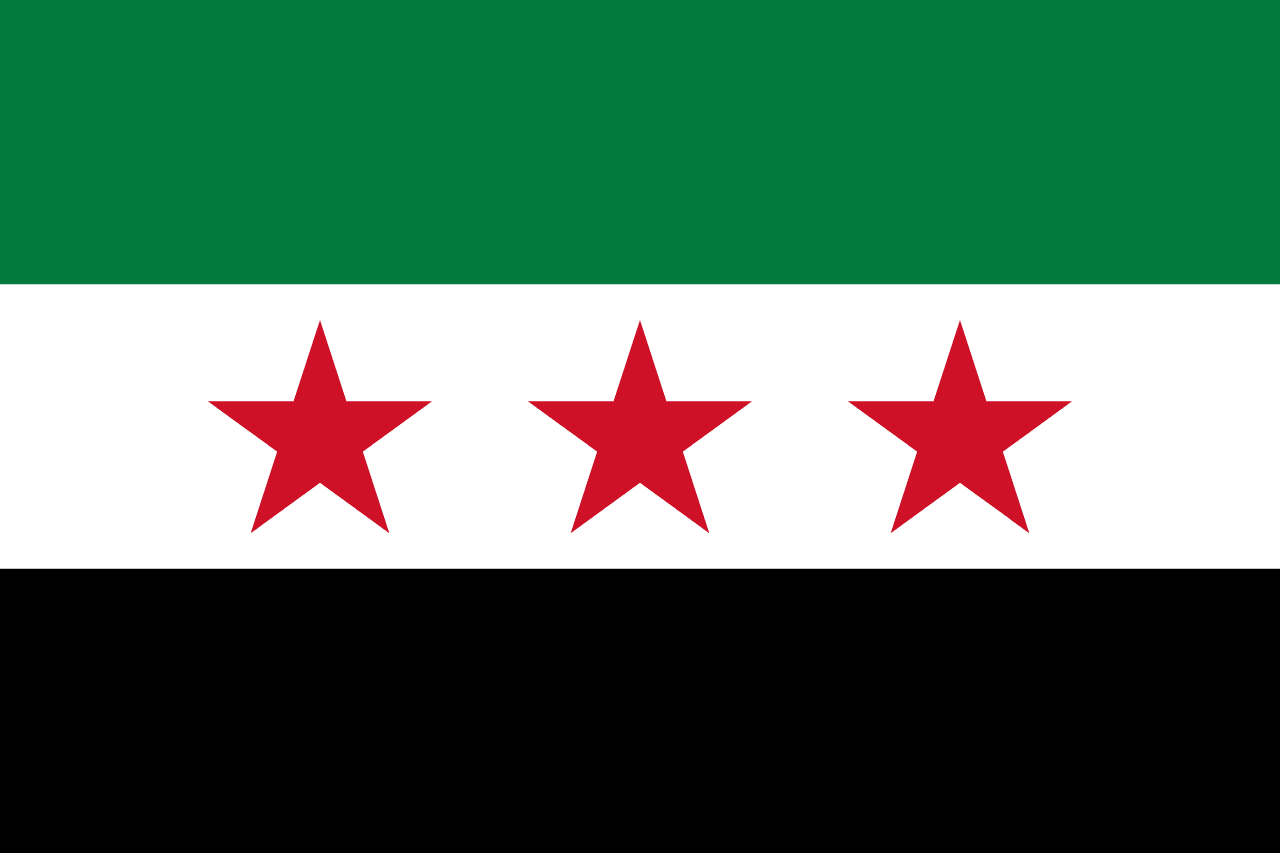
Syria
Asia
Three horizontal stripes of red, white, and black with two green five-pointed stars on the white stripe, representing the Pan-Arab colors of liberation struggles, the Hashemite flag heritage, and the Ba'ath Party's Arab socialist ideology that has governed Syria since 1963.

Iraq
Asia
Three horizontal stripes of red, white, and black (Pan-Arab colors) with 'Allahu Akbar' (God is Greatest) written in green Arabic Kufic script across the white stripe, representing Arab unity, Islamic faith, and Iraqi sovereignty.
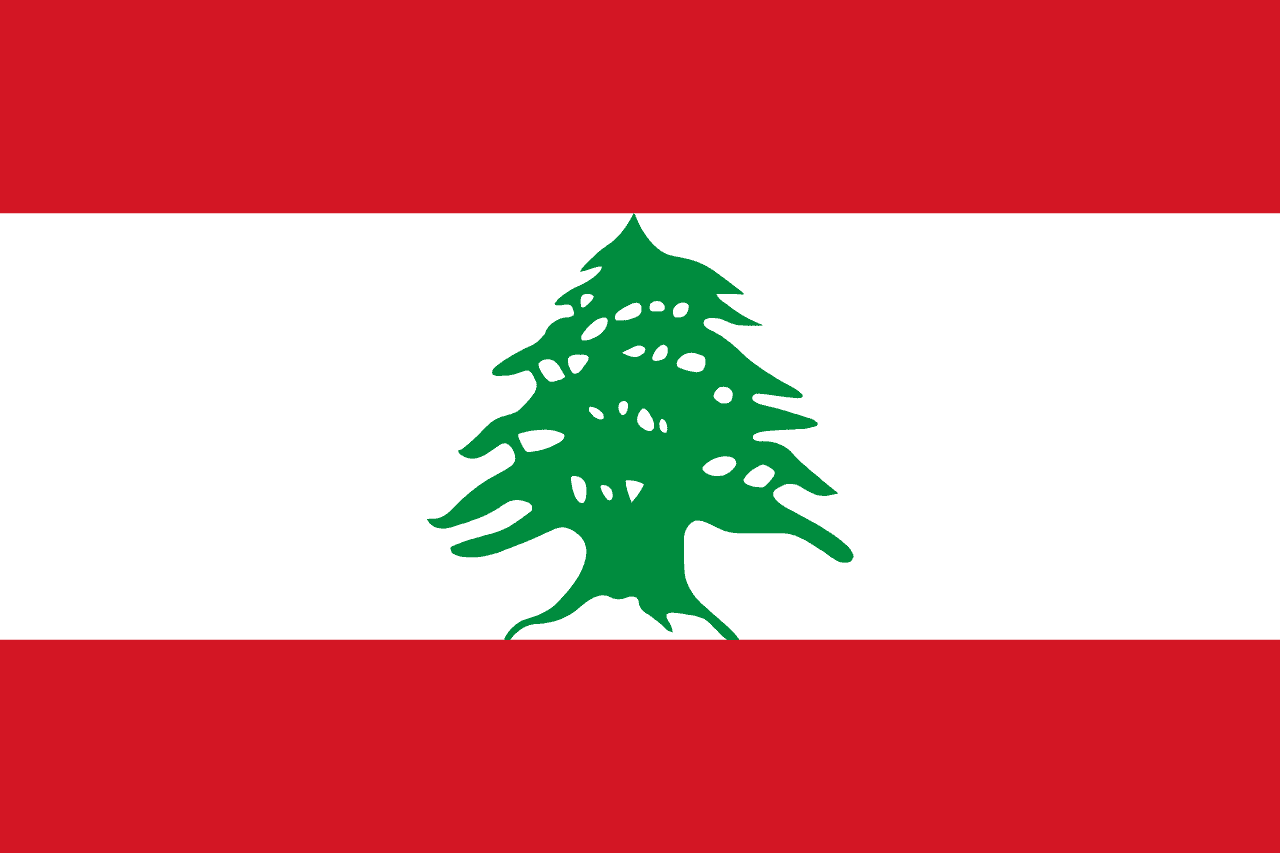
Lebanon
Asia
Two horizontal red stripes separated by a white stripe twice their width, with a green cedar tree centered on the white stripe, representing the strength, purity, and eternal heritage of the 'Land of the Cedars.'